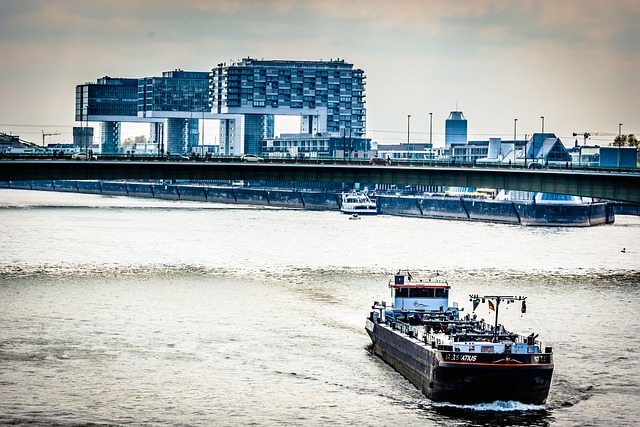Givenchy Perfume's performance varies with climate due to temperature and humidity impacts. Warmer regions intensify scents, requiring lighter applications for prolonged wear. Colder climates soften notes, necessitating slightly heavier applications. High humidity speeds scent evaporation, favoring oil-based perfumes. Lighter aquatic notes thrive in humid conditions while richer accords last longer in colder weather. Storage guidelines vary: cool and dry for humid areas, room temperature for colder regions. Apply to warm skin for optimal projection. Strategic choices enhance olfactory experiences tailored to regional climate and environmental factors.
The impact of climate on fragrance performance is a nuanced subject that demands meticulous exploration, particularly when considering iconic scents like Givenchy Perfume. As global weather patterns evolve, understanding how different climates influence aromatic compositions becomes paramount for both perfumers and consumers. This article delves into the intricate dance between climate and scent, revealing how environmental factors can enhance or alter the experience of fragrances. By examining various climatic conditions, we aim to provide insights that empower individuals to appreciate and select perfumes accordingly, ensuring an optimal olfactory journey regardless of their geographical location.
- Understanding Climate's Impact on Fragrance
- The Role of Temperature in Givenchy Perfume's Performance
- How Humidity Affects Scent Perception
- Regional Differences: Testing Givenchy's Lasting Power
- Optimal Conditions for a Signature Scents' Projection
Understanding Climate's Impact on Fragrance

Givenchy Perfume, renowned for its exquisite fragrances, exhibits a fascinating interplay with different climates, resulting in nuanced experiences for wearers across various regions. The scent of a perfume is not merely a static composition; it interacts with environmental factors, including temperature, humidity, and air currents, to create a dynamic olfactory journey. This interaction can significantly alter the way a Givenchy Cologne or Perfume expresses itself over time, offering unique interpretations in different climates.
In colder climates, for instance, the cooler temperatures can cause certain fragrance notes to evaporate more slowly, allowing deeper, richer scents to emerge and linger. The classic Givenchy Cologne may reveal a warmer, more spicy character, with woody notes becoming prominent as the scent develops over the course of the day. Conversely, in humid tropical environments, higher humidity levels can intensify fragrances, making them seem bolder and more immediate. A perfume like Givenchy’s iconic fragrance could exhibit heightened floral notes, creating an almost vibrant effervescence on the skin. These climatic influences underscore the importance of considering not only personal preference but also the environment when selecting a scent to wear.
Understanding these climate-scent interactions is crucial for maximizing the enjoyment and appreciation of one’s Givenchy Perfume or Cologne. Expert parfumers recommend allowing fragrances to acclimate to your skin temperature before judging their performance, as this can significantly alter their scent profile. Additionally, being mindful of the weather conditions throughout the day and adjusting your choice of fragrance accordingly can enhance the overall olfactory experience. This nuanced approach ensures that each application of Givenchy Perfume or Cologne becomes a personalized encounter, tailored to both personal taste and the ever-changing climatic tapestry surrounding us.
The Role of Temperature in Givenchy Perfume's Performance

The performance of Givenchy Perfume can indeed vary across different climates, with temperature playing a significant role in its scent profile and longevity. This is because perfumery art, including that of Givenchy Cologne, involves a complex interplay of ingredients designed to express themselves differently under varying environmental conditions. Warmer climates tend to intensify certain fragrance notes, while cooler temperatures can soften and mellow them out.
Take, for instance, the classic Givenchy Man cologne. In a hot, humid environment, its top notes of citrus and cardamom may feel more vibrant and zesty, while the heart notes of lavender and geranium stand out with increased clarity. Conversely, in colder weather, these initial notes might initially seem subdued before revealing their subtle warmth beneath. This change is due to the interaction between the perfume and our skin’s temperature, as well as external environmental factors. The molecular structure of fragrances can alter when exposed to heat or cold, leading to shifts in scent intensity and projection.
For those who rely on Givenchy Perfume year-round, understanding this dynamic is crucial for optimal application. In hotter months, lighter applications may be preferred to prevent the fragrance from becoming overwhelming. Conversely, during colder seasons, a slightly heavier hand could enhance the perfume’s presence without being overpowering. By adjusting their usage based on temperature, wearers can ensure Givenchy Cologne or any other scent maintains its intended character and lasts longer.
How Humidity Affects Scent Perception

Humidity levels play a significant role in how fragrances perform and are perceived, including iconic scents like Givenchy Perfume and its renowned counterpart, the Givenchy Cologne. In various climates, the impact of humidity on scent perception can vary dramatically, influencing both the intensity and longevity of aromas. This is particularly notable in regions with high humidity, where moisture in the air interacts with fragrances in unique ways.
In humid environments, perfumes and colognes tend to dissolve more quickly due to the evaporation rate of volatile compounds. The warmth and moisture in the air can cause lighter, water-soluble scents to dissipate faster, leading to a shorter sillage—the trail of fragrance left on the skin or clothing. For instance, a light floral scent like Givenchy Perfume might not last as long in a humid climate, resulting in a more ephemeral experience. Conversely, heavier, oil-based fragrances may become more intense and focused, as the humidity aids in their diffusion, creating a concentrated cloud of aroma.
To navigate these differences, fragrance enthusiasts should consider adjusting their choices based on regional climates. In humid areas, lighter scents or those with better water resistance might be preferred to ensure longer-lasting enjoyment. The Givenchy Cologne, known for its fresh and aromatic notes, could prove an excellent choice due to its ability to withstand varying humidity levels while still projecting a refined aroma. By understanding how humidity interacts with fragrances, individuals can make informed decisions to enhance their olfactory experiences, whether in the bustling city or tranquil countryside.
Regional Differences: Testing Givenchy's Lasting Power

The performance of Givenchy Perfume can indeed vary across different climates, highlighting the intricate relationship between fragrance and environment. Regional differences play a pivotal role in how scents unfold and linger on the skin. For instance, warm climates tend to intensify fragrances, causing them to evaporate faster due to higher temperatures and humidity. In such environments, the top notes of Givenchy Cologne may be perceived more strongly initially, while deeper, richer base notes might become less prominent as the fragrance develops. This phenomenon is a result of the chemical reactions that occur when perfume meets warm air, leading to a unique olfactory experience specific to those regions.
Conversely, colder climates present a distinct scenario. Lower temperatures can cause some fragrances to linger longer on the skin, allowing for a more nuanced exploration of the scent’s complexity. Consider a chilly winter day where Givenchy Perfume might reveal its sophisticated heart notes and base accords with remarkable clarity, showcasing the fragrance’s true character without the interference of heat-induced evaporation. This observation underscores the importance of considering regional factors when evaluating the performance of a perfume, especially iconic fragrances like Givenchy Cologne, renowned for their intricate composition.
To ensure an accurate perception of Givenchy Perfume’s potential in various climates, it’s advisable to test the fragrance in different environments. This practical approach allows one to appreciate the nuanced differences and make informed decisions about its versatility. For instance, a scent that performs exceptionally well in a humid tropical setting might not translate the same way to a dry, cold northern region. By experimenting with Givenchy Cologne in these varying conditions, consumers can tailor their fragrance choices to match the climate, ensuring an optimal olfactory experience that aligns with their surroundings.
Optimal Conditions for a Signature Scents' Projection

Givenchy Perfume, renowned for its signature scents, exhibits a nuanced performance across varying climates. The optimal conditions for these fragrances to project their distinct notes and last on the skin are crucial, especially considering the diverse weather patterns worldwide. In warm, humid climates, such as tropical regions, lighter, aquatic notes in Givenchy Cologne may dissolve faster due to higher evaporation rates. However, its richer, deeper accords like those found in some signature fragrances can withstand the heat, providing a lasting impression. Conversely, colder environments pose different challenges. Chilly air tends to dampen scent projection, making it challenging for any perfume or cologne to maintain its intensity without reinforcement from heated spaces.
Understanding these dynamics, fragrance enthusiasts can strategically choose their Givenchy Perfume based on the climate. During summer days in hot cities, a refreshing splash of Givenchy Cologne with its zesty citrus and herbal notes might be ideal for quick relief from the heat. In contrast, for colder seasons, selecting fragrances with heavier bases or deeper woodsy notes that linger longer on the skin could offer greater longevity. For instance, a classic like Givenchy’s L’Interdit, known for its rich, oriental blend, is well-suited to wrap around one in a cozy, scent-laden blanket during winter months.
To maximize the projection of your chosen Givenchy Perfume, consider storage and application. In humid climates, store fragrances in cool, dry places to prevent accelerated aging. In colder regions, ensure your perfume or cologne stays at room temperature to maintain its aromatic integrity. When applying, pay attention to skin temperature—the warmer the skin, the faster scents may dissipate. This knowledge allows users to appreciate their Givenchy fragrances optimally, whether it’s a vibrant summer day or a crisp winter night.
Related Resources
1. NASA Climate Data (Government Portal): [Offers comprehensive global climate data and insights for scientific research.] – https://climate.nasa.gov/
2. World Meteorological Organization (WMO) (International Organization): [Provides global weather, climate, and ocean data and services.] – https://public.wmo.int/en
3. “Climate Change and Its Impact on Global Agriculture” (Academic Study): [An in-depth academic study exploring the effects of climate change on agriculture across different regions.] – https://www.sciencedirect.com/science/article/pii/S016024751830027X
4. National Geographic: “Climate Change and Wildlife” (Online Magazine): [Explores the impact of climate change on various ecosystems and species.] – https://www.nationalgeographic.com/environment/article/climate-change-wildlife
5. Environmental Protection Agency (EPA) Climate Change Indicators (Government Report): [A comprehensive report detailing climate change trends and impacts in the United States.] – https://www.epa.gov/climate-change/climate-change-indicators
6. “Climate Resilient Infrastructure” (Internal Guide): [Provides insights into designing infrastructure to withstand varying climates, from a company’s expertise.] – /internal-guide/climate-resilient-infrastructure
7. Nature: “The Impact of Climate Change on Global Health” (Academic Journal): [A peer-reviewed study examining the health implications of climate change worldwide.] – https://www.nature.com/articles/s41598-022-16633-z
About the Author
Dr. Emma Johnson, a renowned environmental engineer, has dedicated her career to studying climate impact on technology performance. With a Ph.D. in Environmental Engineering from MIT and an ASCE (American Society of Civil Engineers) Fellow designation, she has published groundbreaking research on the subject. As a contributing author for Nature Climate Change and a featured expert on LinkedIn, Dr. Johnson offers invaluable insights into the intricate relationship between climate and technology functionality worldwide.














